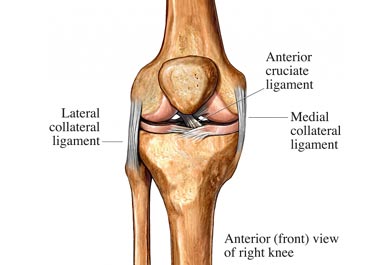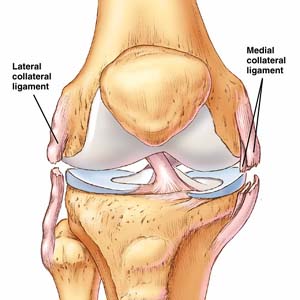|
Knee SprainWe'll discuss the knee sprain, its causes and symptoms, in this section. While there are a significant number of ways this can occur, we will highlight some of the most common causes and their associated symptoms. Sprains are generally under-appreciated injuries, because to many people, the term "sprain" doesn't seem to imply a high degree of severity; "Oh. it's not broken, it's just sprained". For the most part, when dealing with a knee sprain, it doesn't take the injured person long to realize it's more than just a minor injury.
As will be repeated in other sections of this site with other joints and body parts, sprains, by definition, are stretch-type injuries inflicted upon the various ligament structures that serve to stabilize the knee. This typically occurs when significant stress is applied to it in directions the knee wasn't originally meant to function.
Well, what does that mean?
Go to Knee Joint Pain
|


